- Home
- >
- Preservation Archaeology Blog
- >
- Eight Sites in 48 Hours

(September 27, 2019)—I recently joined my Archaeology Southwest coworkers on our annual staff retreat, which entails exploring archaeological sites, connecting to landscapes, and learning a few new skills. This year, we experienced Salado and Mimbres archaeology in the Upper Gila and the Mimbres River valleys in New Mexico, where our intrepid trip leaders Karen, Leslie, and Allen brought us to eight sites in just over 48 hours.
Our first stop was the Nine Mile Site, a Salado settlement in southeastern Arizona. Excavated by Jack and Vera Mills in the 1940s, the site retains an abundance of research potential. The Bureau of Land Management manages and protects Nine Mile, but the site has been vandalized by looters in the past. Under the Archaeological Resources Protection Act, it is a federal crime to damage, excavate, or remove archaeological resources on public and Tribal lands without a permit. Public land managers and law enforcement are serious about addressing this problem, and in 2016 an individual was prosecuted for multiple looting episodes at Nine Mile, (ARPA).
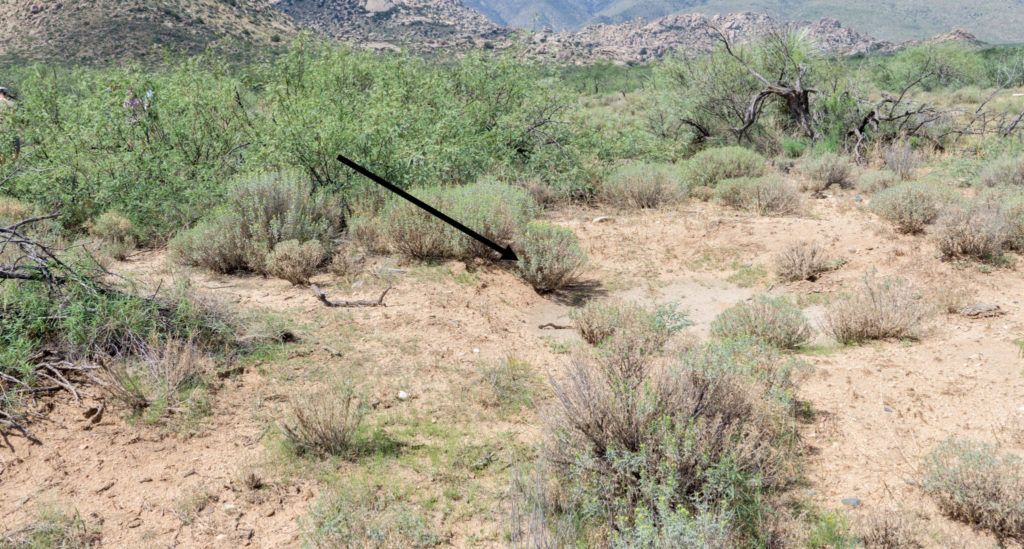
We settled in at our camp in Cliff, New Mexico, where the Upper Gila Preservation Archaeology Field School students live for six weeks every summer. Staying entertained at camp is never a problem when Allen Denoyer is around. For the past four field seasons, Allen has been teaching students about ancient technologies through hands-on activities and experiments, including building an adobe structure. We joined in the construction effort by mixing mud to add to the wall of the new adjoining room. Before the weekend was over, Allen had us hafting knives using stone tools and using an atlatl to throw darts at a fake turkey.
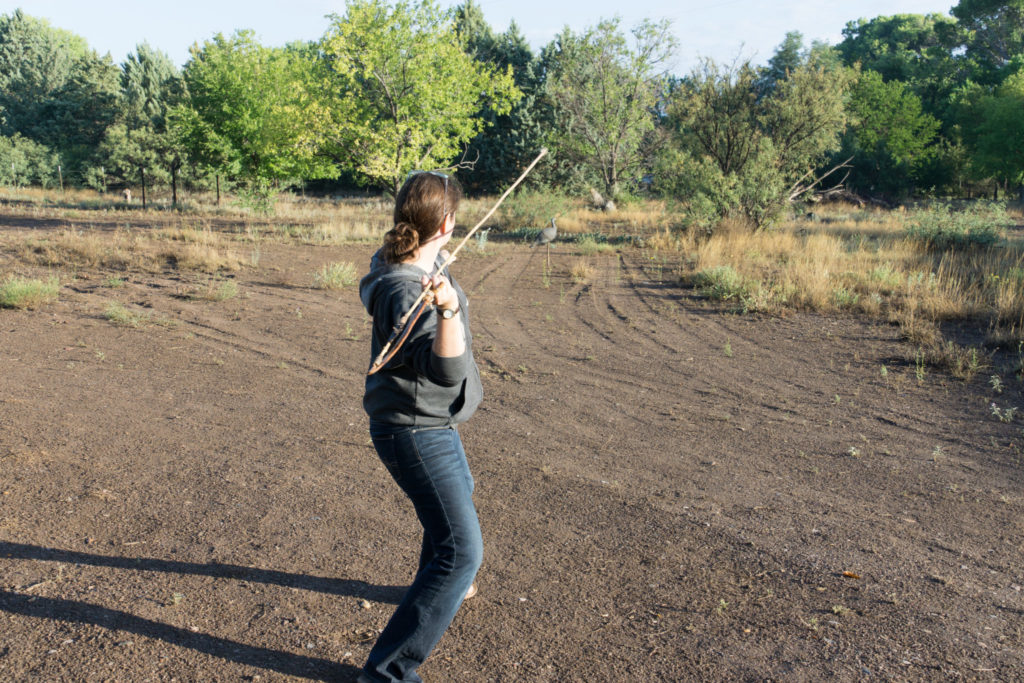
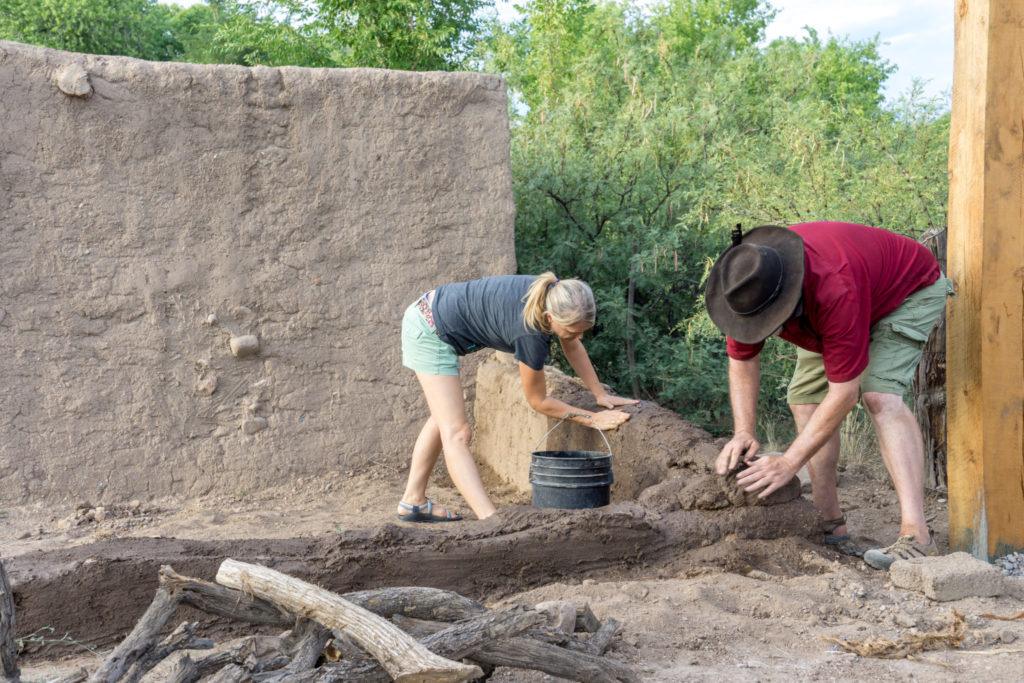
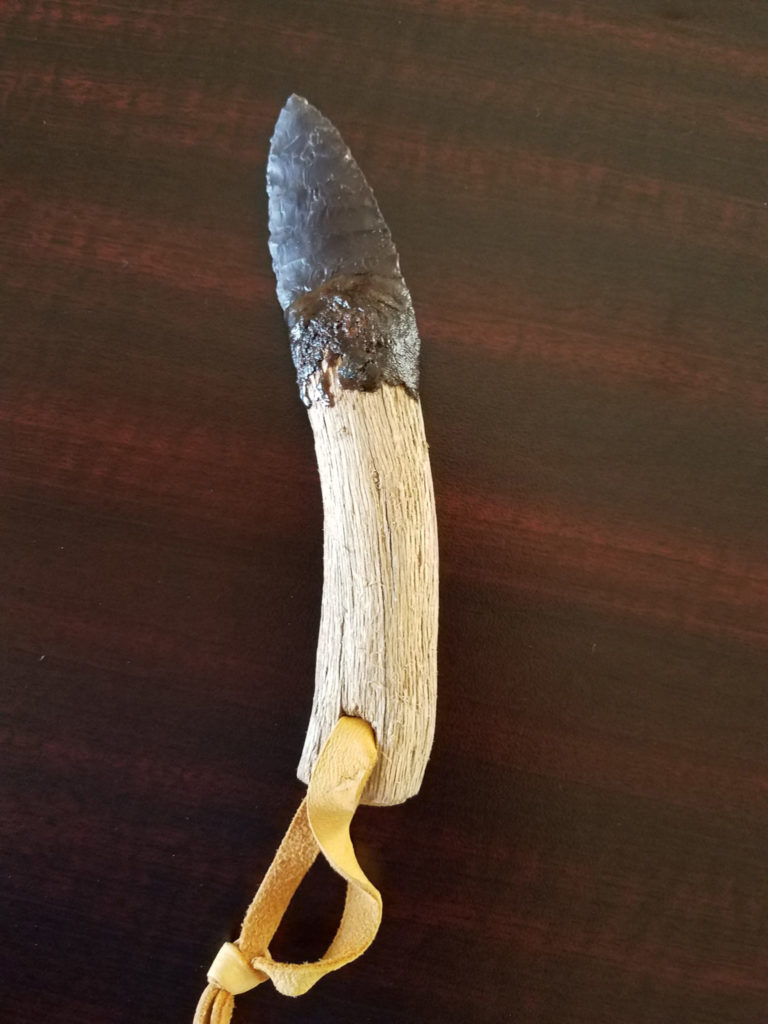
We traveled through the Mimbres valley and spent a couple hours on the interpretive trail at the Mimbres Cultural Heritage Site (MCHS), a large Mimbres village known as the Mattocks Ruin. Through their preservation and stewardship, the MCHS is able to provide educational opportunities to youth groups and the general public. The more recent history of the property is also interesting, so when you visit, be sure to learn about the Gooch and Wood houses.
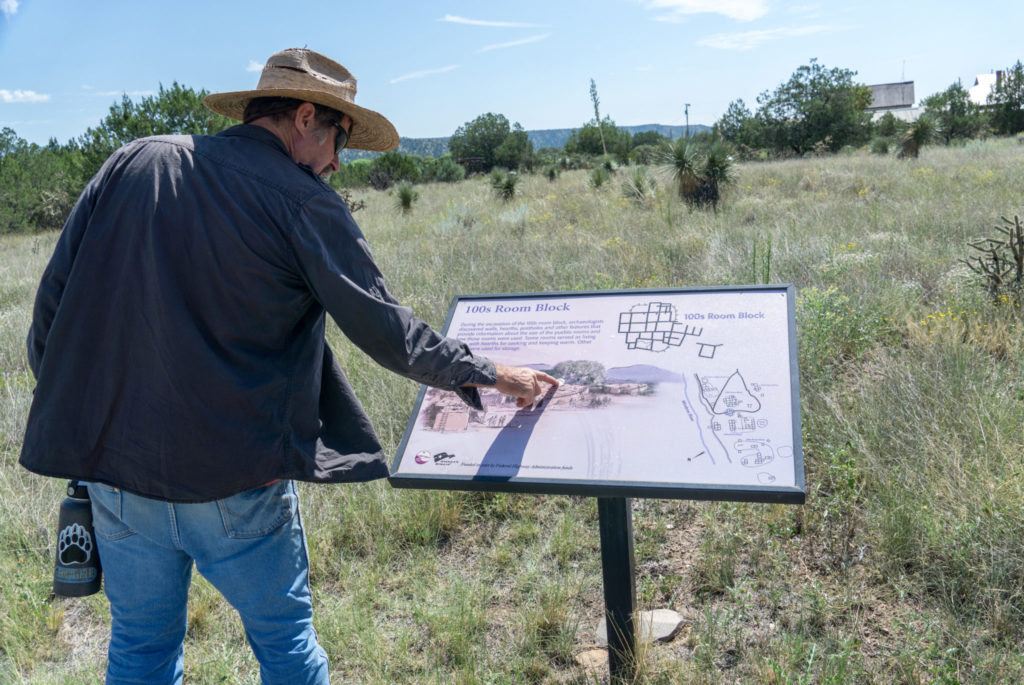
A New Mexico SiteWatch site steward kindly met us early on a Sunday morning to give us access to Woodrow Ruin, one of the largest Mimbres sites in the Upper Gila. People lived at Woodrow from the Late Pithouse to the Classic Mimbres periods, and the full sequence of pottery designs are found across the site. Fenced in and monitored by site stewards, Woodrow is protected from the extensive looting that has damaged so many Mimbres archaeological sites. The success of these protection efforts is immediately obvious, with surface artifacts and remnants of architecture visible as soon as we crossed the gate’s threshold.
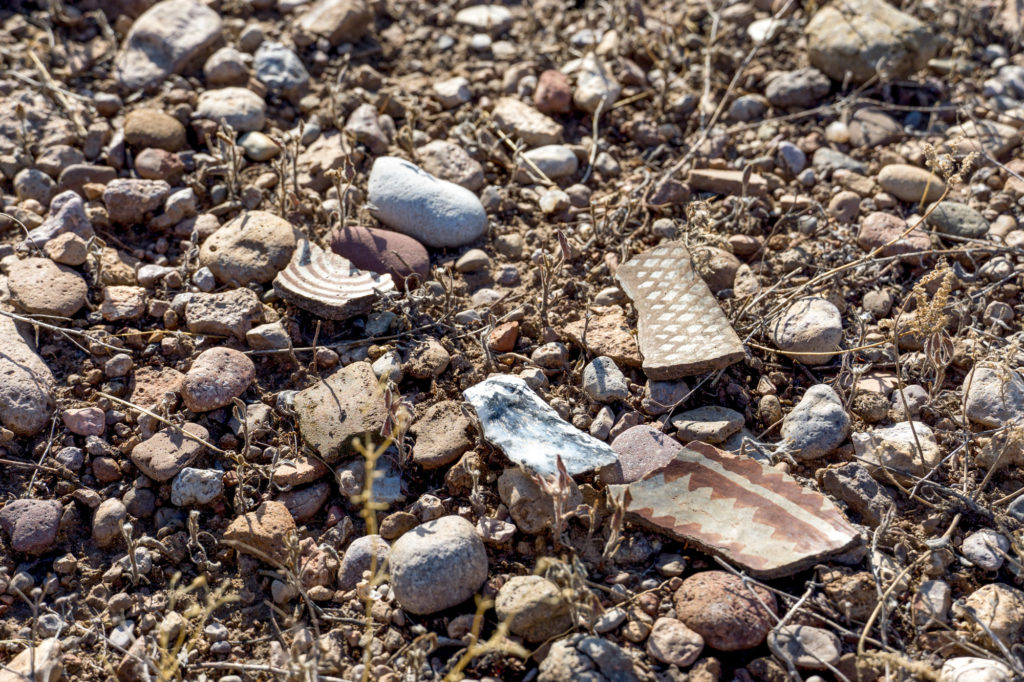
On our next stop was a Salado site, where we were surprised to see a series of recent tire tracks and disturbed vegetation across a portion of the site. The landowners are actively working on solutions to prevent any future damage. This is a good reminder that unauthorized off-roading activities can inadvertently impact cultural resources; fortunately, this site does not have any exposed architecture.
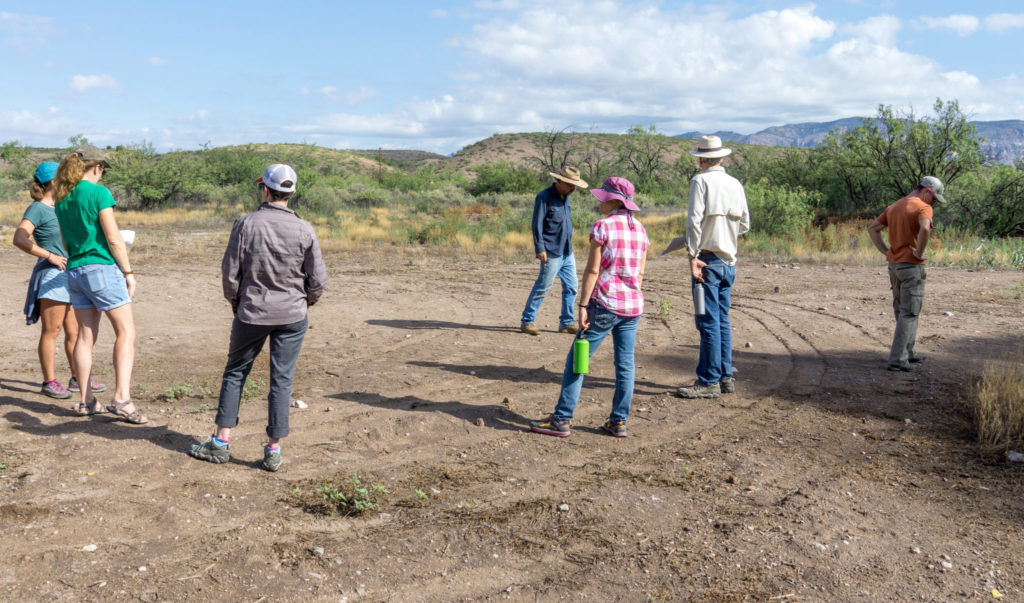
I returned to the office knowing more about a region many of us are actively involved in, and reflecting on the different ways people have worked to preserve and protect history. The Native American ancestral sites we visited would be threatened or lost if not protected by nonprofit organizations, federal and state agencies, and private individuals. Visiting these places provides a meaningful multisensory educational experience that cannot be found in a history book. I encourage you to visit our public lands, support nonprofit organizations, and learn more about the people whose ancestors lived here in the ancient past.
Many archaeological sites are accessible to the public or encountered in the backcountry. It is imperative to visit sites in a respectful and responsible manner. Some guidelines are listed below, and check out this video from our friends at the Friends of Cedar Mesa.
- Do not remove, relocate, or collect artifacts. Their information potential is lost when removed from context.
- Ancient architecture is fragile. Do not sit, walk, or climb on walls or rock alignments.
- Do not touch petroglyph or pictograph panels.
- Do not leave traces of your presence.
- Do not share site locations on social media. Remember that GPS coordinates may be embedded in your digital photos.
- Engage in recreational activities away from archaeological sites.
- Promptly notify law enforcement of any vandalism or suspected looting activity 1-800-637-9152*
*Looters are dangerous and have been linked to gun and methamphetamine trafficking. If you encounter a looter in the act, do not confront them. Immediately relocate to a safe place and call local authorities.
Thank you to our friends and partners who preserve the places we visited: Bureau of Land Management; Imogen F. Wilson Education Foundation; the Mimbres Foundation; The Nature Conservancy; National Park Service; the State of New Mexico, New Mexico SiteWatch program, and Grant County Archaeology Society members; and private landowners.
Explore the News
Related to This
-
Culture Mogollon
-
Location Gila Cliff Dwellings National ...